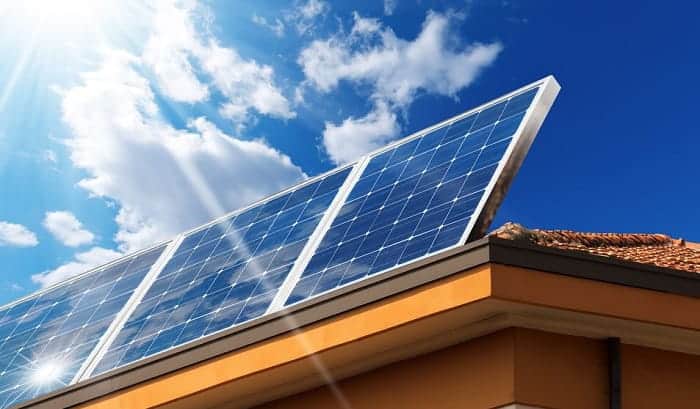Table of Contents
- Solar Energy Definition for Kids
- How Does Solar Energy Work?
- What is Renewable Energy? What Makes It Valuable?
- What are Solar Panels? What are They Made of?
- When the Sun Hits a Solar Cell, What Happens Next?
- What are Solar Shingles?
- How Do Solar Panels Work for Kids?
- Innovations of Solar Panels
- The Advantages and Disadvantages of Using Solar Energy
- Solar Power for Kid Facts
- Conclusion
Have you seen solar panels recently? Nowadays, more and more homeowners install them on their roofs. But, did you know that solar panels are not only made for houses? They are also used in many places to power different things.
This article will explain how do solar panels work for kids. Solar panels work by capturing the sun’s energy. You can install them everywhere so long as they can receive sunlight exposure. Using solar energy does not create pollution, so we can enjoy a green lifestyle and protect our environment.
In this post, we’ll find out more about solar panels and solar energy.
Solar Energy Definition for Kids
Basically, solar energy is the type of energy that comes from sunlight. We use this to form electricity and enjoy free, clean, and fresh energy without destroying the planet.
While it’s true that the sun sets when darkness comes, it does not stop shining. Did you know that we only see the sun in the daylight because the earth rotates? Since the earth rotates on its axis, the sun shares its energy with all living creatures worldwide.
How Does Solar Energy Work?
You must install solar panels on the roof of your house. This way, they can absorb an ample amount of sunlight. Solar panels take the energy from the sun and use it to provide houses and other establishments with electricity.
When the sun penetrates the solar panels, these panels capture its energy. Afterward, they form direct current electricity. This energy is fed into a solar inverter, which transforms the energy into alternating current electricity.
Finally, this form of electricity is then used to run various home appliances. Note that you can use this electricity at home or export it to the grid when you don’t need or use it.
Meanwhile, consider checking out this exciting video about how solar energy works:
What is Renewable Energy? What Makes It Valuable?
Renewable energy comes from nature. Examples of renewable energy include water, wind, and the sun. The other names for it are clean energy or green energy because it does not pollute our planet when we use it to power our homes and the surroundings.
In fact, it helps keep our air fresh and clean. When we use it, we can be free from pollutants and other toxins.
At the moment, scientists are striving to search for more excellent methods to use renewable energy for us to enjoy healthier lives and a safer planet. This explains why installing solar panels is beneficial and a good solution.
What are Solar Panels? What are They Made of?
Have you heard of solar cells? Solar panels are built with countless tiny solar cells. The solar cells are held together in a hefty metal frame and linked by several other parts.
Indeed, they are the most vital components of the solar panel. Solar cells are built using two thin sheets of silicon. Each sheet of silicon comes with a different electrical charge, and together, create an electrical field.
When the Sun Hits a Solar Cell, What Happens Next?
Explaining Solar Cells for Kids
When sixty solar cells are formed, they are patched together behind a layer of glass to create a solar panel. When the energy from the sun hits a solar cell, the tiny particles known as electrons are released, and they begin to move. This allows us to enjoy free electricity and power different stuff.
The solar panel then gathers this electricity from countless solar cells and picks it up so that we could have electricity to use later. However, how does this take place? Where does all of the electricity go?
What are Solar Shingles?
Solar shingles are the newest form of solar panels. They are similar to standard asphalt roof shingles in look. You can use them in areas where the appearance of conventional solar panels might be unwanted — for instance, on a house’s rooftop.
How Do Solar Panels Work for Kids?
The primary uses for solar panels include:
- Indoor and outdoor light
- Heating swimming pools — a solar-operated hot water heating system uses solar-powered hot water heating panels. You can install these devices on your roof to absorb the heat of the sun and bring it to the pool.
- Power pumps
- Modes of transportation and space exploration
- Power your cabin, home, tool shed, camper, and many others
- Battery charging
- Heat for homes
Innovations of Solar Panels
The delightful news is that solar panels are no longer expensive to use compared to diesel, oil, and liquefied natural gas. Moreover, solar power will become the primary source of energy soon!
Lots of innovations have been formed to enhance the performance and usage of solar panels over the years. They’ve been used to power cars and for space exploration.
The Advantages and Disadvantages of Using Solar Energy
The Good Side
- Clean, fresh, and safe energy.
- It does not require complete maintenance.
- You can make money from using solar power.
- It generates a wholly renewable source of power.
- Solar energy is dependable.
- Unlike other sources of electricity, solar energy does not generate noise.
The Not-so-Good Side
- Solar energy does not produce power at night.
- As of this time, it is not that efficient yet.
- It is slightly pricey to invest in and install.
Solar Power for Kid Facts
- The sun has generated energy for countless years. This proves that our ancestors had used solar energy to keep their bodies warm, cook food, and dry their clothes. These days, solar energy is used to form electricity.
- Did you know that the earth obtains more energy from the sun in a single hour than the planet consumes in a year?
- The amount of sunlight that reaches the earth differs. It largely depends on the time of year, location, weather conditions, and time of the day.
- For solar panels to provide the globe’s electrical needs, less than one percent of land would need to be covered in solar panels.
- Wind is a form of solar energy. It is formed by the uneven heating of our planet’s surface.
- Alexandre Edmond Becquerel discovered the photovoltaic effect in 1839. This explains how electricity can be produced from sunlight.
- Solar cells are also known as photovoltaic cells. The word “photo” means light, and “voltaic” means electricity in Latin.
- Russell Ohl invented the solar cell in 1941.
- Solar panels can work for years. Interestingly, some solar panels installed in the 1970s are still in good condition and adept at producing electricity until today.
- Solar panels used for homes are commonly affixed on rooftops. Meanwhile, industrial or commercial setups are typically on trackers affixed on the ground. The trackers aim the panel towards the sun as it moves across the sky.
Additionally, photovoltaic panels are often utilized in outer space and are known for being one of the few available power sources.
- Isn’t it amazing to know that solar energy will continuously supply us with energy for as long as the sun exists? And, the sun’s existence is believed to be another five billion years.
- Solar cells are the most affordable means of creating electricity. They are less expensive compared to nuclear power stations and new coal.
Conclusion
This post answered how do solar panels work for kids in a way they can understand. We also discussed solar energy’s limitless benefits.
I would like to reiterate the essential facts about using solar energy:
- Installing solar panels is a practical solution because it helps create accessible, clean, and safe energy to power your home and other stuff without spending more.
- To ensure charging efficiency, you must install solar panels on the roof of your house or somewhere it could collect sufficient sunlight.
- Solar energy has been around for ages, and scientists continuously discover more about improving its usage.

I am Kathleen Miller, staff writer and reviewer of the Avasolar team. Working with the team has been a pleasure for me so far, I hope to bring readers useful information by creating detailed and easy-to-follow contents.



